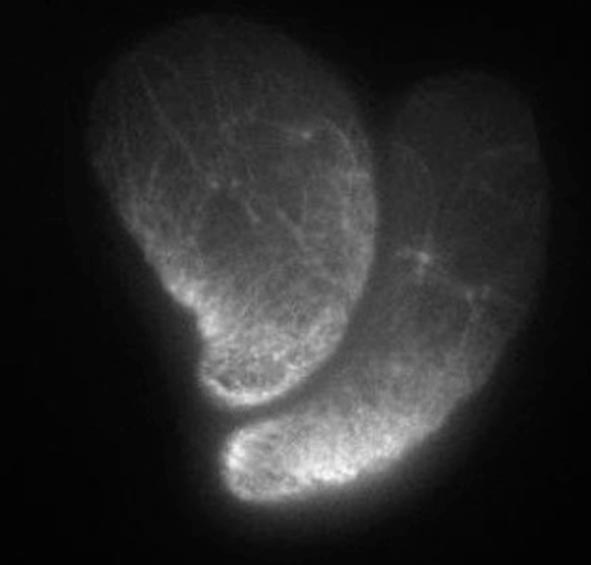February 13, 2015
How cells move in a tight spot
IST Austria Professor Carl-Philipp Heisenberg and colleagues present new mode of 3D cell migration in current issue of Cell • Embryonic progenitor cells use stable blebs to move with high speed and persistence • Mechanism may represent a universal switch for cell migration in confinement

© Verena Ruprecht and Carl-Philipp Heisenberg
Cell movement is central to many physiological processes in health and disease and also drives the development of a newly forming embryo. Depending on conditions and cell type, different migration modes are used to respond appropriately. To move forward, cells can form stable crawling protrusions or unstable contractile blebs, and use mechanisms that depend on adhesion to the environment (other cells or the extracellular matrix) or are adhesion-independent. Regardless of the mode of migration, cells have to adopt a polarised shape to move in a particular direction. However, it is still unclear which molecular, physical and environmental cues trigger which mode of cell migration under what circumstances.
In the February 12 edition of Cell, IST Austria’s Cell and Developmental Biology group headed by Professor Carl-Philipp Heisenberg now report a novel type of 3D cell movement, termed stable-bleb migration, used by cells in confinement. They observed it in progenitor cells of the gastrulating zebrafish embryo, a model organism used in developmental biology to study human development, under conditions of high spatial confinement, such as encountered in a wound site. Progenitor cells quickly form a single balloon-like protrusion at their front, allowing them to move much faster and more persistent than any other cell within the embryo. These stable-bleb cells may represent a novel cell migration mode that can be activated in various cell types under confinement.
How do the cells adopt this mode of migration and why is it important? The switch from a sessile or randomly migrating cell to a cell undergoing directed migration is guided by both external signals, such as biochemical cues and mechanical stimuli from the environment, and internal signals within the cell. Verena Ruprecht, joint post-doc in the Heisenberg and Sixt groups, together with colleagues from the Institute Curie in Paris show that simply squeezing isolated progenitor cells between two surfaces is sufficient to induce stable bleb cell polarization and migration. Strikingly, stable bleb cells do not require an adhesive surface to do this; they are able to move because their internal cytoskeleton flows backwards, which when coupled through some unspecific friction to the outside environment, generates sufficient force to propel the cell forward.
The migration mode can be artificially induced and reversed, irrespective of the developmental stage or primary fate of the progenitor cell. It is triggered by a purely mechanical mechanism, with no need for either intracellular chemical signals or extracellular specific adhesion. This suggests that the stable-bleb migration mode may represent a generic transformation of cells that become spatially confined. An independent study published in the same issue reports a similar stable bleb cell transformation in various cancer cell lines. Hence, stable bleb cell transformation may represent a universal switch that allows cells to quickly respond with directional migration, especially when “stuck” in confined environments.
In early embryonic development, progenitor cells may use this mode of stable bleb migration to quickly get out of wound sites. It is possible that it is also triggered in metastatic cancer cells on the surface of a growing tumour, leading to fast dissemination of metastatic tumour cells into surrounding tissues.



